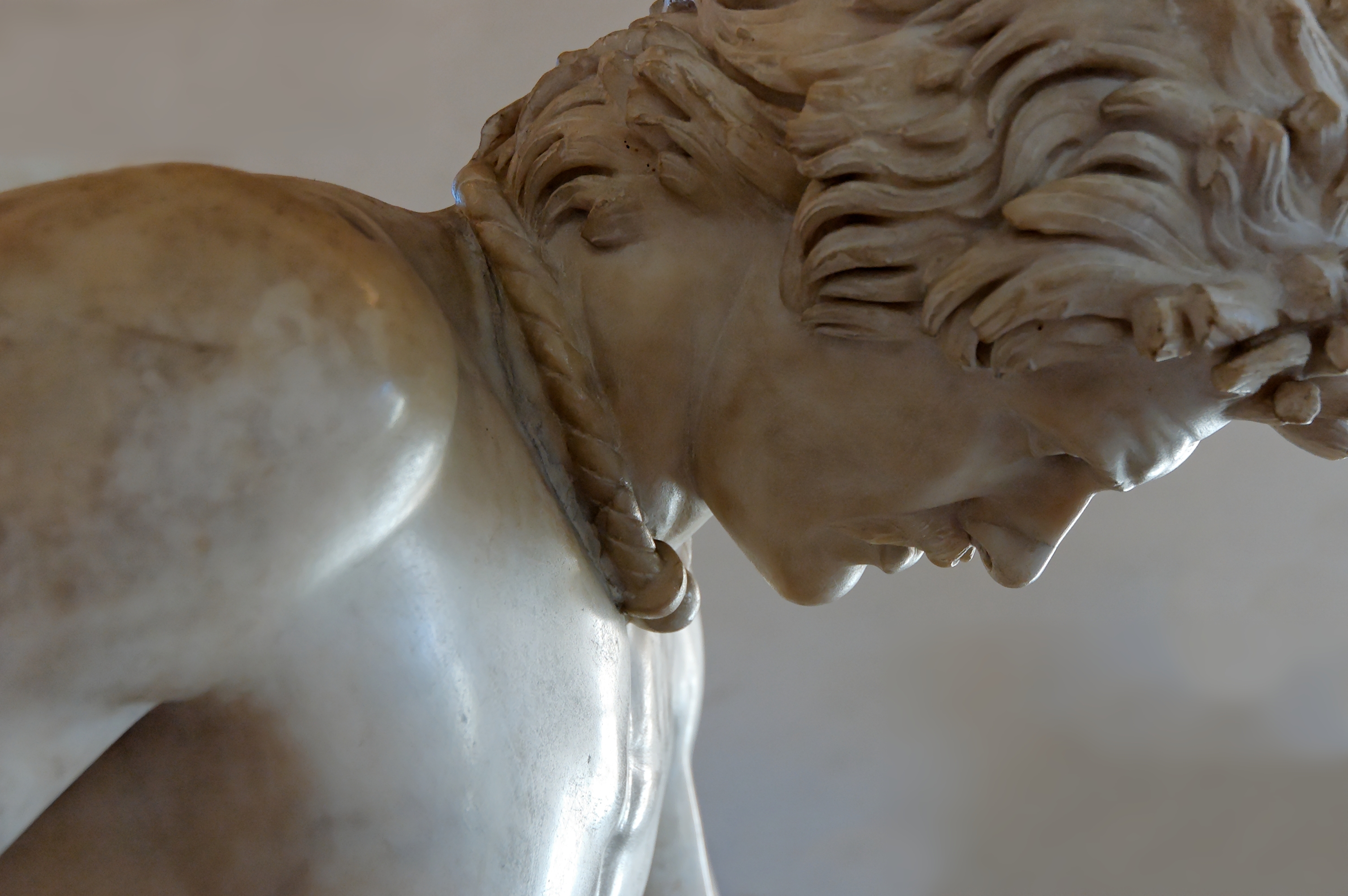Giacobbe Giusti, Boy with Thorn

Giacobbe Giusti, Boy with Thorn

Giacobbe Giusti, Boy with Thorn

Lo Spinario (Palazzo dei Conservatori, Musei Capitolini).
Boy with Thorn, also called Fedele (Fedelino) or Spinario, is a Greco-Roman Hellenistic bronze sculpture of a boy withdrawing a thorn from the sole of his foot, now in the Palazzo dei Conservatori, Rome. A Roman marble of this subject from the Medici collections is in a corridor of the Uffizi Gallery, Florence.[1]
The sculpture was one of the very few Roman bronzes that was never lost to sight. It was standing outside the Lateran Palace when the Navarrese rabbi Benjamin of Tudela saw it in the 1160s and identified it as Absalom, who “was without blemish from the sole of his foot to the crown of his head.”[2] It was noted in the late twelfth or early thirteenth century by the English visitor, Magister Gregorius, who noted in his De mirabilibus urbis Romae that it was ridiculously thought to be Priapus.[3] It must have been one of the sculptures transferred to the Palazzo dei Conservatori by Pope Sixtus IV in the 1470s, though it is not recorded there until 1499-1500.[4] It was celebrated in the Early Renaissance, one of the first Roman sculptures to be copied: there are bronze reductions by Severo da Ravenna and Jacopo Buonaccolsi, called “L’Antico” for his refined classicizing figures: he made a copy for Isabella d’Este about 1501[5] and followed it with an untraced pendant that perhaps reversed the pose. For a fountain of 1500 in Messina, Antonello Gagini made a full-size variant, probably the bronze that is now in the Metropolitan Museum of Art, New York.
Giacobbe Giusti, Boy with Thorn

Roman marble copy, c.25 – 50 CE, of the lost 3rd century BCE Hellenistic original of the type. From the Castellani collection, Rome, said to have been found on the Esquiline. The base of the statue is worked as a rock, with a hole for a fountain pipe. (British Museum)[6]
In the sixteenth century, bronze copies made suitably magnificent ambassadorial gifts to the King of France and the King of Spain. For Francis I of France, the gift came from Ippolito II d’Este;[7] his copy was overseen by Giovanni Fancelli and Jacopo Sansovino, and the transaction effected by the courtly Benvenuto Cellini. For Philip II of Spain, the copy was the gift of Cardinal Giovanni Ricci. In the following century Charles I of England had a bronze Spinario by Hubert Le Sueur (Haskell and Penny 1981: 308).
Small bronze reductions were suitable for the less grand. A Still Life with ‘Spinario’ by Pieter Claesz, 1628, is conserved at the Rijksmuseum; among the riches emblemmatic of the good life, it displays a small plaster model of the Spinario.[8]
There were also marble copies. The Medici Roman marble seems to have been among the collection of antiquities assembled in the gardens at San Marco, Florence, which were the resort of the humanists in the circle of Lorenzo il Magnifico, who opened his collection to young artists to study from. The young Michelangelo profited from this early exposure to antique sculpture, and it has been discussed whether Masaccio was influenced by the Medici Spinario or by the bronze he saw in Rome in the 1420s,[9] but Filippo Brunelleschi more certainly adapted the Spinario’s pose for the left-hand attendant in the bronze competition panel, The Sacrifice of Isaac 1401, his trial piece for the doors of the Baptistery of San Giovanni.[10]
The formerly popular title Il Fedele (“The faithful boy”) derived from an anecdote invented to give this intimate and naturalistic study a more heroic civic setting: the faithful messenger, a mere shepherd boy, had delivered his message to the Roman Senate first, only then stopping to remove a painful thorn from his foot: the Roman Senate commemorated the event. Such a story was already deflated in Paolo Alessandro Maffei’s Raccolta di statue antiche e moderni… of 1704[11]
Taking into account Hellenistic marble variants that have been discovered, of which the best is the Thorn-Puller from the Castellani collection now in the British Museum,[12] none of which have the archaizing qualities of the bronze Spinario, recent scholarship has tended to credit this as a Roman bronze of the first century CE, with a head adapted from an archaic prototype.[13]
http://www.italianways.com/lo-spinario-ragazzo-con-mistero/
















 “Capitoline Brutus”, bronze portrait head, glass-inlaid bone eyes, late 4th to early 3rd centuries BC, on a 16th-century bronze bust
“Capitoline Brutus”, bronze portrait head, glass-inlaid bone eyes, late 4th to early 3rd centuries BC, on a 16th-century bronze bust